About Thyme – the home that became a masterclass in Cotswolds living
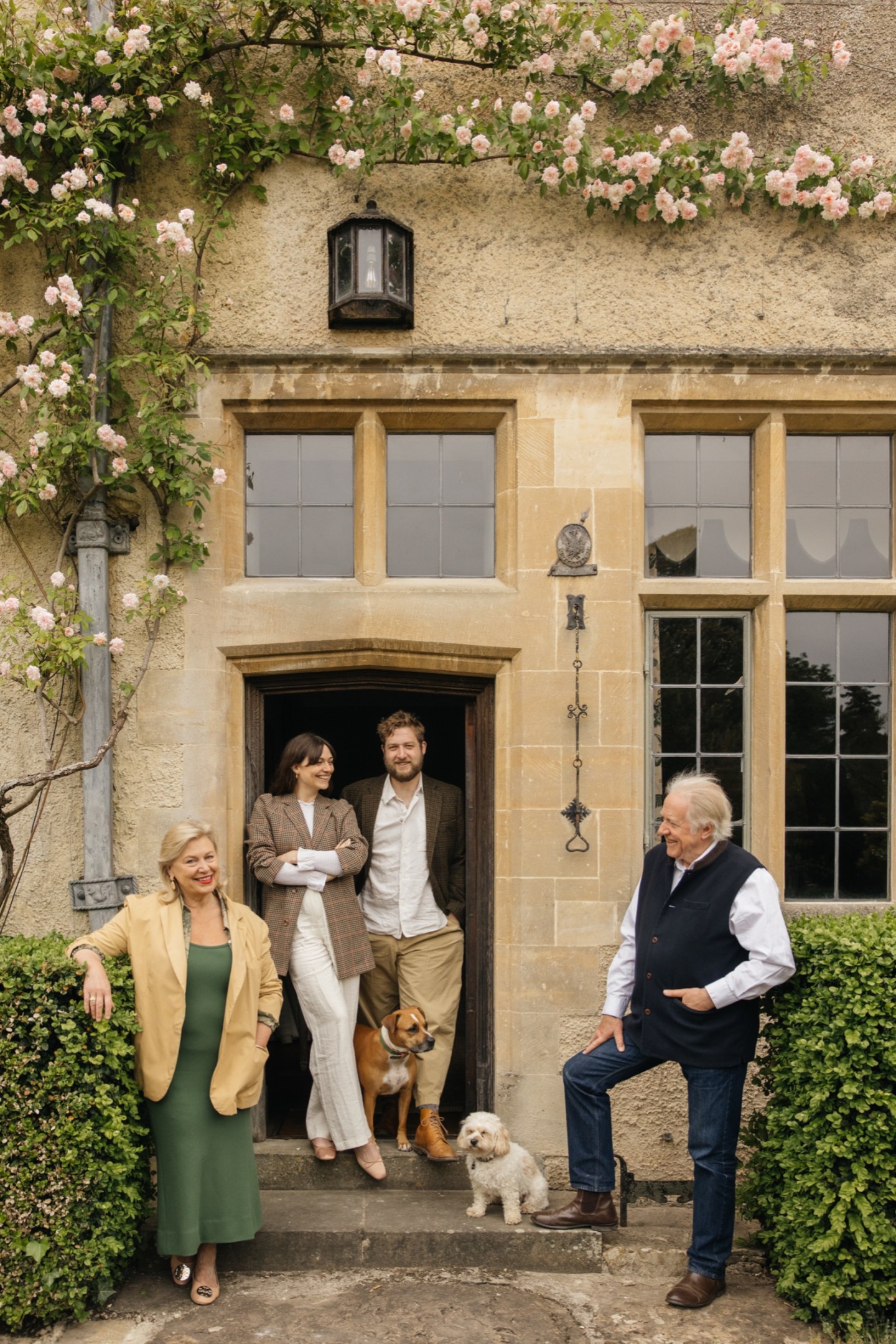
Roula Khalaf, Editor of the FT, selects her favourite stories in this weekly newsletter.
Caryn Hibbert is on a mission. On a dewy May morning, the quietly magisterial châtelaine of the Cotswolds retreat Thyme is head down in the long grass in hot pursuit of wild orchids. Wearing an ankle-grazing waxed Barbour coat and Wellingtons, her trusty cavachon Angelica (or “Gelly Bean”) by her side, she carefully scans the ground, which is scattered with sweet lady and meadow buttercups, before pointing out the dotted leaves of a common spotted orchid. At their most abundant, the water meadows of the Southrop Manor Estate will be teeming with delicate clusters of their pale-pink and purple petals. Around this time the migrating birds arrive from sub-Saharan Africa, joining the resident kestrels, herons, kites and barn owls, one of which swoops across the field in snowy resplendence on its own hunt.
“When you see the land from above, our water meadows are a little, lone island of greenness,” says Hibbert. Covering around a third of the 150-acre estate, which includes a farm, kitchen gardens, spa, cookery school, restaurant, The Swan pub and a serenely chic 31‑room hotel set across a halcyon assortment of historic barns, houses and cottages, this landscape first compelled Hibbert to relocate from London to Gloucestershire’s Leach Valley more than two decades ago. “I remember going into the garden, standing by the river and seeing a kingfisher fly past,” she says. “It had this impossibly beautiful, wonderfully wild feeling.”


Today, Hibbert is anxiously awaiting the first belated call of another bird: the cuckoo, that age-old portent of spring. “I love the cuckoo. It tells us that all the birds have arrived, and illustrates the power and interconnectivity of nature,” she says, standing by one of the clear limestone-bedded streams that meander through the gardens and are home to otters, water voles and damselflies. In the distance, the fields are punctuated by the woolly silhouettes of the estate’s 70-strong flock of Black Welsh Mountain sheep.
Set on the east side of the village, amid this idyllic pastoral scene, is the Hibberts’ family home, Southrop Manor. “I’d always wanted to move to the countryside, but I didn’t love the house at the beginning,” says Hibbert, who trained to be an obstetrician and gynaecologist and worked in medicine for years (she started Thyme when she was in her early 50s). On their first night in 2002, her husband Jerry, a now-retired animation director, was in London for work. Hibbert was home alone with three young children, all terrified by the ghost stories they’d been told by the gardener, when the roof sprang a major leak. As she recalls, “We hadn’t done a survey.”
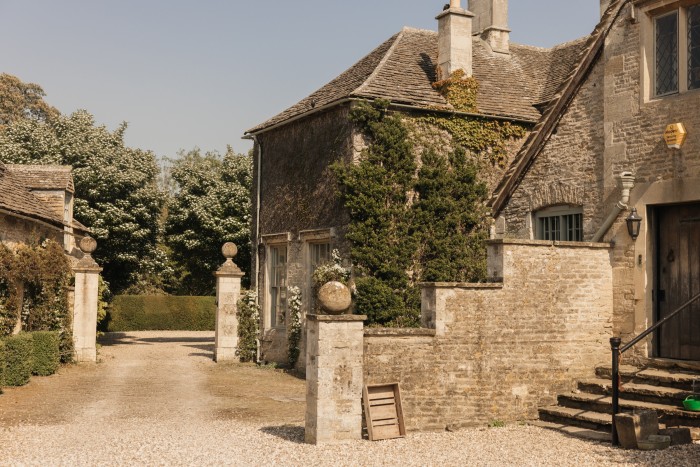

Originally known as Philibert’s Court, the eight-bedroom Grade II*-listed manor house dates mostly from the 16th century, with additions made in 1800, but the oldest Norman parts date back to the Domesday Book of 1086. Every stone is imbued with history, giving rise to its own, very particular, time-worn charm. Jerry’s study was once the manorial court – there is said to be a secret tunnel, dating back at least to the 15th century, that leads to the adjacent Norman church – and portions of the original 11th-century edifice remain intact, including the vast stone fireplaces which are scattered throughout.
During the 1920s, much of the manor was refashioned by the English architect Norman Jewson, who embellished the interior with his elegant arts and crafts handiwork. Jewson, who was taught by the architect-designer Ernest Gimson, adorned even the lead rainwater drainpipes with beaded foliate beauty. He also played fast and loose with the structure, moving the grand Norman arch, carved with stone chevrons, from the double-height entrance hallway to serve as the entrance of the dining room. Such radical reconstruction would never be approved today.

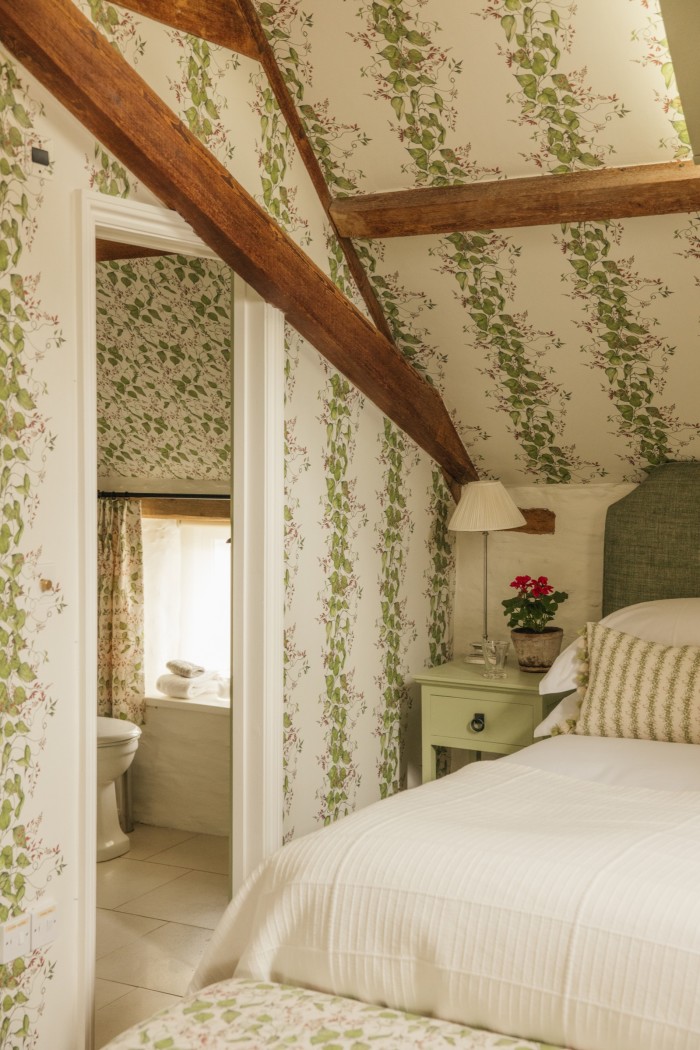

The ancient arch gives way to a cocooning wood-panelled room, known as the oak dining room, that’s topped with decorative plasterwork featuring everything from hares to hedgehogs and robins to squirrels, created from Jewson’s observational studies of the estate’s wildlife. It’s all offset by a patterned latticework ceiling and an ornately carved fireplace that lends the space a heady, dramatic air.
The maze of ground-floor rooms varies hugely in scale, spanning the wonderfully undone grandeur of the drawing room, complete with inherited art, antiques and a boudoir grand piano, and the cosiness of the low-ceilinged snug, all of which nod to Hibbert’s taste for the English country-house style. The Hibberts worked with English Heritage to reconfigure the kitchen, joining it with a former pantry and corridor to create an expansive space – whose cupboards have recently been painted in a cheery verdigris by Edward Bulmer – but apart from that, little has changed during their tenure.


“It’s a very solid house. There’s nothing precious about it,” she says. “With so many people stomping around in muddy boots I’ve learnt to be relaxed; I like it being lived in.” At the peak of lockdown, with the hotel closed, the entire Hibbert clan decamped back home. Seated around the kitchen table today for a simple lunch of chard and butterbean soup are her eldest daughter, Camilla, who has recently taken on the role of general manager; her son Tom and his wife Poppy, who were married at Southrop Manor last year; and Charlie, the chef-director at the Ox Barn restaurant – what Hibbert calls “the heart and soul” of Thyme – and his wife, the New Zealand-born food writer Molly Tait-Hyland. Both couples are accompanied by their baby daughters, Florence and Ophelia, born just 10 weeks apart. There are almost as many dogs as people.
“This house tells the story of the past thousand years,” says Hibbert. “It has gradually evolved over time.” That same slow unfurling applies to every aspect of Thyme, which has grown since 2008 from a cookery school into a thriving hotel – with spa – and boasts some 130 employees.

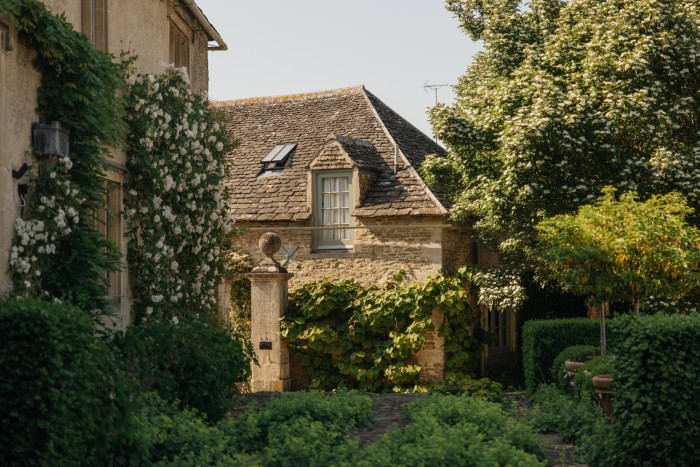
Hibbert’s latest creative outlet, Bertioli, is a verdant array of textiles, wallpapers, Stoke-on-Trent ceramics, table linens and furnishings, all featuring her own painterly botanical designs. It began in typically understated and familial style when, while trying to find botanical artists to exhibit in the tithe barn at Thyme, Hibbert decided to try her hand. “I picked up a paintbrush for the first time since school,” she says.
It was her son Charlie who spotted the promise of these early watercolour renderings of wild hedgerow roses, medlar fruits and wild garlic, adding them to the menu design of his restaurant in the 19th-century former ox barn. And what began as a handful of large-scale sketches has burgeoned into a standalone series of collections. Every pattern begins with a walk around the estate, and draws the natural world into the home. The newest, Vegetable Row, comprises 14 fabrics and wallcoverings printed in England whose names are straight out of the pages of Beatrix Potter. But although they sound cottage-y, the Radish Stripe and Carrot Stripe patterns have a smart, clean look, whether dressing the walls or encasing the series of pretty, skirted footstools. The accompanying Founding Collection depicts the regal oak leaf, sinuous fern, cherry blossom, buttercup and cobnut. “The way the paintings translate into fabric is magical,” says Hibbert, who digitises the prints with the help of Jerry. “You get this real sense of movement.”
Hibbert works from the manor’s original hallway, a large light-filled room with an open fire, where her watercolours and artistic paraphernalia cover the length of the former billiards table, hung with an antique chandelier. There are baskets overflowing with rolls of Bertioli wallpaper, fabric samples draped over sofas and vases filled with wildflowers, set alongside her latest subject – a simple jar of lovage. The lattice windows look out towards the water meadows, a sea of green whose infinite variation is reflected in every one of Hibbert’s naturalistic creations.

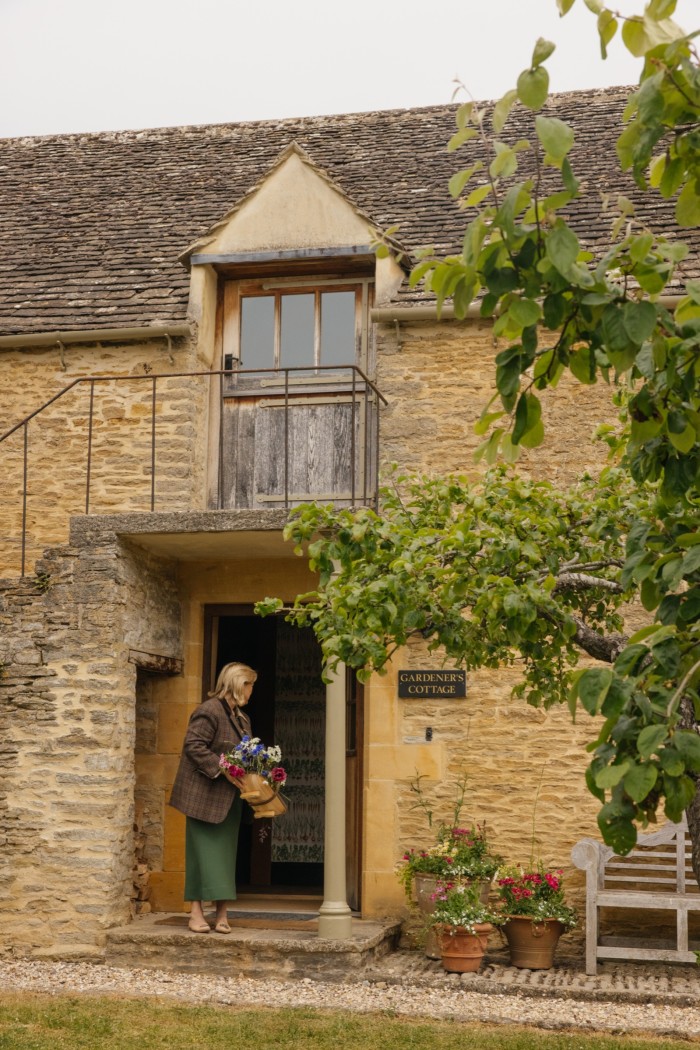
As a child, Hibbert recalls being fascinated by the carrots that her mother, a passionate plantswoman and devotee of Miriam Rothschild, stored in baskets under the sink. “I would try to capture the way the leaves beautifully stretched towards the light,” she says. Her father, Michael Bertioli, was the entrepreneurial physicist behind the firm Druck, pioneering the use of silicon to measure pressure, and supplying transducers across the aerospace and automotive, medicine and utilities industries. Hibbert was gently steered towards medicine. “Science was the epitome. Art was not considered a serious subject,” she says.
Yet it was Bertioli who guided her through a key part of the development of Thyme, playing a transformative, hands-on role in the renovation of the giant, derelict farm buildings and barns, which now sit at its core. “They were his barns, not mine,” says Hibbert of the painstaking restoration of the 16th-century tithe barn and the neighbouring ox barn, which feature poured and polished concrete floors and Douglas-fir beams. “The whole intention was to preserve the historic fabric and simplicity of the buildings. He was the one who wanted it to become a proper business. I felt I’d been set a challenge.”

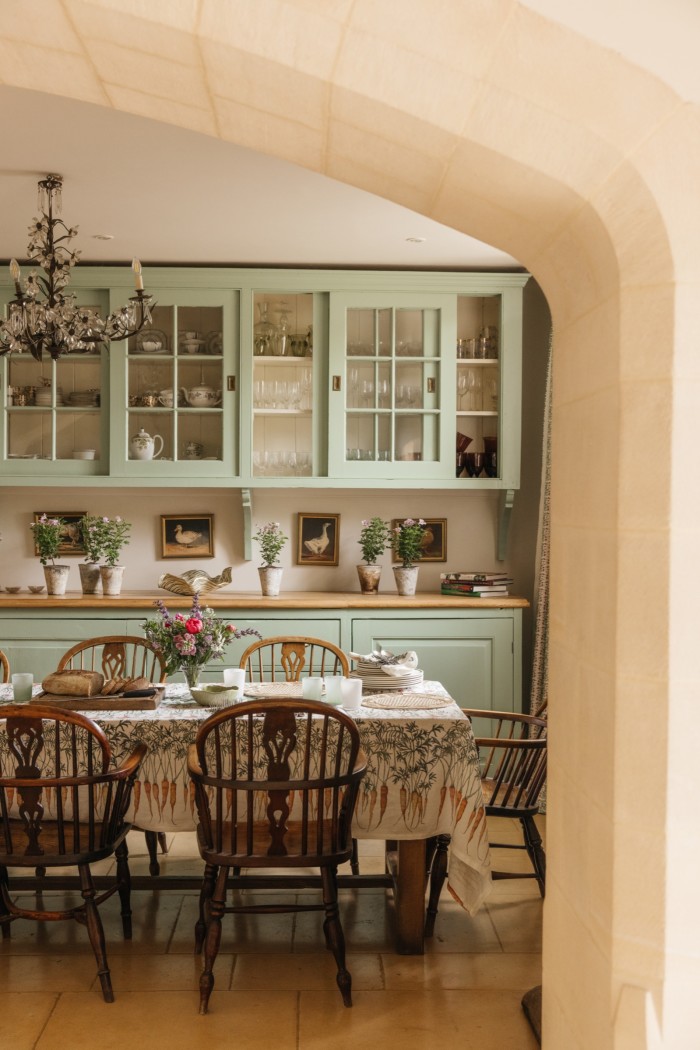
It feels fitting that the Bertioli name lives on in the interiors and accompanying beauty line, which draws on Hibbert’s background in medicine and is designed to tap into the healing power of breath. The first Bertioli to come to England was Alessandro, a Roman musician who arrived in the 1820s. Any guest put on hold on the hotel telephone will hear his sonatina, unearthed by Hibbert’s brother David from the Bodleian Library in Oxford.
Back in the meadow, Hibbert plucks a sprig of water mint from banks of the stream. Inhaling its perfume, which forms the bedrock of the Bertioli scent, she scans the horizon. She is in a reflective mood. “The truth is that none of this would have been possible without family,” she says, before we leave the swaying grasses for the promise of a good meal and a healthy dose of R&R.

Comments